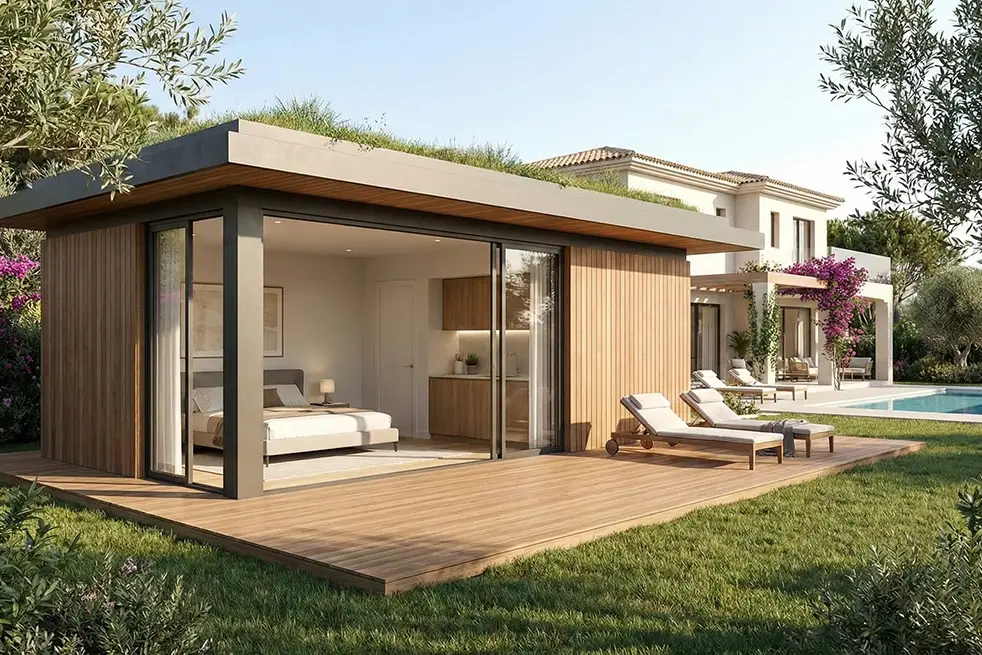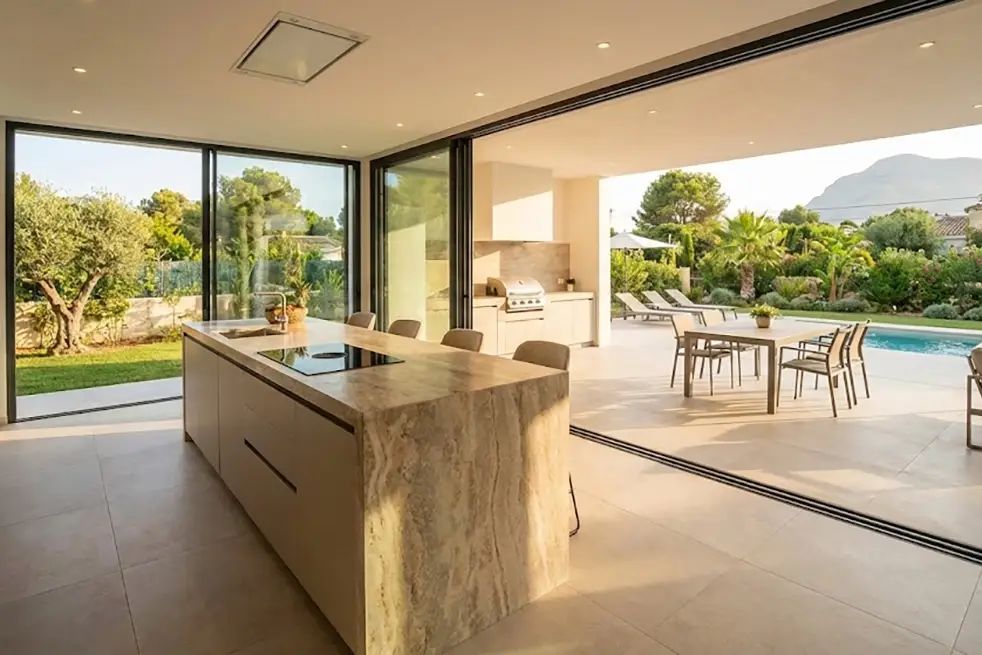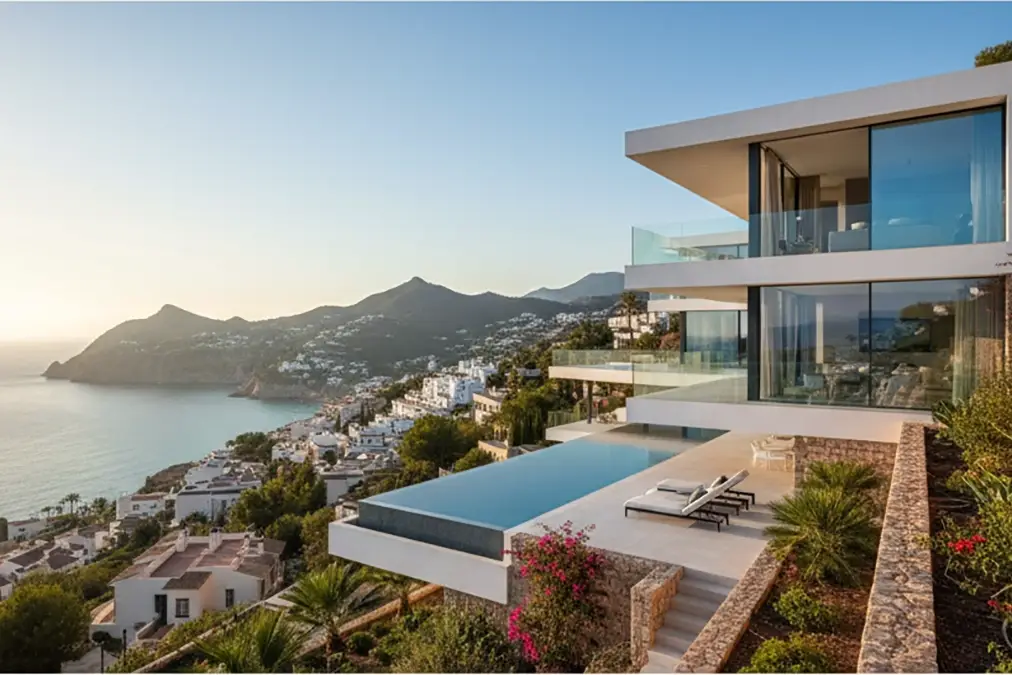What is landscape architecture?
Landscape architecture is much more than garden design. It is a discipline that blends art, science, and technical skill to transform the environment, integrating human intervention with nature. Its aim is clear: to create green spaces that are functional, sustainable, and emotionally meaningful for those who inhabit or move through them.
This branch of architecture is responsible for planning, designing, and managing outdoor and open spaces—from small private courtyards to large urban parks, protected natural areas, or landscape infrastructure. Landscape architecture always seeks balance: between aesthetics and functionality, between the built and the natural, between the present and the future.
A brief history of landscape architecture
Although the term is relatively modern, landscape architecture has deep roots. From the Hanging Gardens of Babylon to the Islamic palaces of Andalucía, humans have long shaped their natural surroundings with aesthetic and symbolic intent.
However, it was in the 19th century—with figures like Frederick Law Olmsted, designer of New York’s Central Park—that the modern profession of landscape architect emerged. Today, this role is essential in sustainable urban development and in addressing climate change, offering green solutions within complex architectural projects.
The difference between landscape architecture and gardening
These two concepts are often confused, but they are not the same. Gardening focuses on the care and planting of vegetation, while landscape architecture deals with the overall design of the space—its form, function, circulation, ecology, and aesthetics.
A landscape architect analyses the site, studying its history, climate, soil, and social uses to design solutions that enhance the quality of the environment. Their work goes beyond decoration: it creates outdoor spaces that solve problems, inspire wellbeing, and promote biodiversity.
Fundamental principles of landscape architecture
Every quality landscape intervention is grounded in strong principles. Some of the key ones include:
-
Unity: the design must be visually and functionally coherent
-
Balance: natural and built elements should be harmoniously combined
-
Scale: respect both human proportions and the character of the site
-
Biodiversity: promote healthy, native habitats
-
Movement: create comfortable, accessible circulation and flow
-
Sustainability: consider the long term—efficient use of water, energy, and resources
These principles apply to everything from a private garden to a metropolitan park. At our architecture studio, these values are essential to every one of our landscape architecture projects.
Landscape architecture as functional art
A well-designed park is not only beautiful. It also regulates the microclimate, retains rainwater, reduces noise, encourages social interaction, and helps relieve stress. Landscape architecture brings form and function together in an inseparable way.
That’s why, when we speak of thoughtfully designed green spaces, we’re referring to interventions where every tree, path, or fountain has a purpose. These are places that are felt, lived, and remembered.
Benefits of applying landscape architecture to residential projects
When we talk about housing, we often focus on floor plans, interior layout, construction materials, or energy efficiency. Yet there is something that is often overlooked—and which significantly shapes the experience of living in a place: the design of the outdoor environment. This is where landscape architecture reveals its full transformative potential.
Applying landscape architecture principles to a residential project isn’t just about beautifying a garden. Above all, it’s about creating meaningful connections—between indoors and outdoors, between people and nature, between the home and its surroundings. Whether it’s a country house, a coastal villa, or a terraced home in the urban centre, there is always an opportunity to reimagine the immediate environment with intent.
At our architecture studio, we approach every residential landscape project as an extension of the home. And the benefits of this approach are numerous.
Comfort and wellbeing beyond the walls
A well-considered landscape design can significantly improve the thermal comfort of a home. For example, the strategic placement of trees or green pergolas can provide natural shade in summer, lowering indoor temperatures and reducing energy consumption. It also acts as a sound barrier, protecting against external noise—especially in urban or semi-urban areas.
Moreover, numerous studies have shown that both visual and physical contact with vegetation has positive effects on health: it reduces stress, improves mood, and enhances concentration. Having a view of a well-designed garden, walking along a path lined with aromatic plants, or simply sitting on a bench surrounded by nature can make a real difference to everyday life.
Practical functionality in outdoor spaces
Many homes have patios, terraces, or gardens that are underused. With the input of a landscape architect, these areas can be transformed into liveable, functional spaces for year-round enjoyment. A spot for breakfast in the open air, a reading nook beside a pond, or an outdoor dining area shaded by natural cover—all begin with a design that thoughtfully reflects the habits of those who will use it.
Landscape design can also include pathways, play areas for children, small urban vegetable gardens, or sensory gardens—connecting the family with natural cycles and encouraging a lifestyle richer in everyday experiences.
Increased property and sesthetic value
A home with an integrated landscape architecture project doesn’t just improve in terms of liveability—it also gains in value. Visual coherence between interior and exterior spaces, and harmony between materials, plant species, and finishes, result in a strong, elegant, and distinctive identity.
In areas such as the Costa Blanca, where many homes are linked to residential tourism or property investment, well-designed green spaces make a clear difference in the market. It’s not a luxury—it’s a smart investment that significantly enhances the property’s appeal.
Sustainability and efficiency on a domestic scale
When applied to single-family homes, landscape architecture incorporates specific sustainable solutions: rainwater harvesting for irrigation, the use of native low-water species, permeable garden design, and the creation of microclimates. These choices not only benefit the environment but also lead to savings in maintenance, energy, and resources.
For example, in a recent project we designed a Mediterranean garden that required no constant irrigation and also helped to cool the home during the hottest months. This proves that well-applied sustainability is also a guarantee of comfort and long-term durability.
Emotional connection with place
Lastly, we shouldn’t overlook one of the most powerful yet intangible benefits: the landscape’s ability to evoke emotion. A carefully maintained outdoor space, designed with sensitivity and in harmony with the home’s architecture, is not just enjoyed—it is felt.
For many people, the garden is the first thing they see when arriving home, the backdrop to their conversations, the setting for celebrations, or a quiet refuge at the end of the day. When that environment has been shaped by landscape architects with those moments in mind, it becomes a true source of emotional value.
Urban landscape architecture: Designing more human cities
Just as a well-designed garden transforms daily life in a home, the same happens on a larger scale in cities. Urban landscape architecture seeks to reconnect people with their surroundings, create green lungs within the built environment, and generate open spaces that encourage outdoor living.
Modern cities need more than concrete and traffic—they need green spaces that breathe, absorb noise, provide shade, and offer places for social connection. A tree-lined walk, a neighbourhood park, a lively square—these are more than urban decor; they are stages for community life.
As architects and urban designers, we understand that these broader principles can also be applied at a domestic scale. Every patio, every terrace, every entrance to a home can become a microcosm of this green philosophy.
At La Quinta Fachada, we bring these ideas into individual residential projects too—designing outdoor spaces that encourage connection, relaxation, and contemplation. Small green cities within every home.
Sustainable solutions in residential landscape architecture
Sustainability is no longer an option—it is an ethical responsibility. In the design of outdoor spaces for homes, landscape architecture offers practical solutions that care for both the environment and the wellbeing of families.
Some of the strategies we implement in our projects include:
-
Selection of native species adapted to the local climate, reducing the need for irrigation and pesticides
-
Installation of efficient, controlled drip irrigation systems
-
Rainwater harvesting and reuse for garden purposes
-
Design of natural shaded areas to reduce surface temperatures
-
Creation of permeable surfaces to encourage water infiltration and prevent runoff
These design decisions not only protect the environment—they also improve the quality of life for residents, reduce maintenance costs, and immediately increase the value of the property.
The role of landscape in residential bioclimatic architecture
In bioclimatic architecture for homes, the landscape is not merely decorative—it is structural. A smartly designed outdoor environment can significantly reduce a home’s heating and cooling needs.
For example:
-
Deciduous trees that allow sunlight in during winter but provide shade in summer
-
Green walls that shield façades from hot or cold winds
-
Ponds or fountains that cool the surrounding air through evaporation in circulation areas
These natural solutions enhance the home’s energy performance without relying on costly or polluting mechanical systems. At La Quinta Fachada, we carefully study the landscape architecture of each project to ensure that the outdoor space actively contributes to indoor comfort.
The relationship between residential landscape architecture and personal wellbeing
Our connection with nature is not just an aesthetic preference—it is an emotional need. Numerous studies confirm that frequent contact with green spaces improves mental health, reduces anxiety levels, and increases feelings of happiness.
In family homes, having outdoor spaces designed by professionals means offering each household member a place to disconnect, to breathe, to reconnect with themselves.
A small inner garden, a patio filled with aromatic plants, a gravel path winding through shrubs—every landscape gesture can be an invitation to daily wellbeing.
When we design these spaces at La Quinta Fachada Arquitectura, we think of real people: children at play, adults at rest, older generations on gentle walks. Because landscape architecture is, above all, architecture of the soul.
Examples of landmark landscape architecture projects
This discipline has given rise to unforgettable works. Some international benchmarks include:
-
The High Line (New York): a former elevated railway transformed into an urban park
-
Parc de la Villette (Paris): a contemporary intervention in a former industrial area
-
Madrid Río: the revitalisation of the riverbank into a vibrant public space
These projects show how landscape architecture can transform what is residual into something liveable, and what is forgotten into something memorable.
How landscape architecture influences tourism
Tourists don’t just look for monuments—they seek memorable experiences. And often, those experiences happen in parks, promenades, viewpoints, or public gardens.
Cities like Valencia, Bilbao, and Barcelona have enhanced their tourist appeal thanks to landscape interventions that connect landmarks with vibrant, comfortable, and accessible green spaces.
Opinion: Nature designed with purpose
Landscape architecture is a powerful tool for reshaping the way we live. From a public square to a private garden, and even large-scale green infrastructure, every space can be improved when approached with sensitivity, expertise, and purpose.
At La Quinta Fachada Arquitectura, we work with you to design outdoor spaces that not only enhance the beauty of your home, but also fill it with life, meaning, and emotion. Spaces that invite you to breathe, to reflect, to connect.
Because there is no greater architecture than that which merges with its landscape—and no better landscape than one that grows from the soul of the home.




